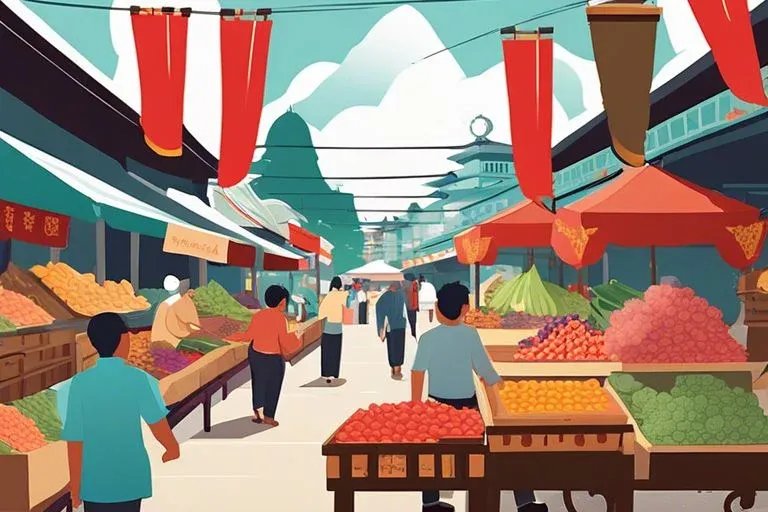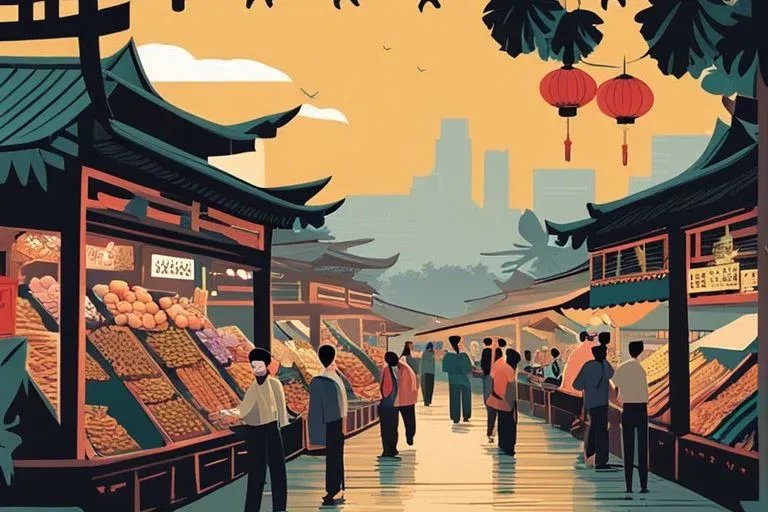Majestic and vibrant, Sibu Town is a jewel nestled in the heart of Sarawak, Malaysia. Situated along the mighty Rajang River, this Swan City is renowned for its rich timber industry, diverse Foochow Chinese community, and bustling Central Market.
As one of the largest towns in Sarawak, Sibu plays a significant role in the state’s economy and culture, serving as a hub for trade, commerce, and tourism. In this blog post, we will discuss the fascinating history, unique culture, and bustling market scene that make Sibu Town a must-visit destination for travelers. As it is an intriguing subject of study for enthusiasts of Malaysian heritage and urban development.
Key Takeaways:
- Sarawak: Sibu Town is located in the Malaysian state of Sarawak, known for its vibrant culture and natural beauty.
- Rajang River: Sibu Town is situated along the banks of the majestic Rajang River, making it an important hub for transportation and trade.
- Timber Industry: Sibu Town has a thriving timber industry, with the central market bustling with activity and showcasing the region’s rich forestry resources.
Sibu, The Swan City
Any visitor to Sibu, often referred to as “The Swan City,” will be captivated by the unique charm and picturesque beauty of this bustling town. Situated on the banks of the majestic Rajang River in the state of Sarawak, Sibu is a fascinating blend of cultural diversity, historical significance, and modern-day development.
Origin of the “Swan City” Moniker
Originating from the Foochow Chinese settlers who arrived in Sibu in the early 20th century, the moniker “The Swan City” is a nod to the graceful swans that used to inhabit the region. The settlers were enamoured by the resemblance of the Rajang River to the shape of a swan, and consequently, the nickname stuck, giving the town a charming and evocative identity.
Any exploration of Sibu would be incomplete without a visit to its cultural and urban landmarks. The town’s Central Market, bustling with activity and showcasing the vibrant diversity of local produce and handicrafts, is a not-to-be-missed attraction.
Additionally, the influence of the Foochow Chinese community is evident in the town’s architecture, cuisine, and festivals, providing a rich tapestry of cultural experiences for visitors.
For instance, the timber industry has played a pivotal role in shaping the town’s economy and identity, and the legacy of the Foochow Chinese remains prominent in the town’s social fabric and traditions. The Central Market offers a sensory feast of sights, sounds, and flavors, making it a hub of cultural exchange and commercial activity in Sibu.

The Rajang River
One of the most significant features of the town of Sibu is its close connection to the majestic Rajang River. As the longest river in Malaysia, the Rajang plays a pivotal role in the history, culture, and economy of Sibu. The river is a lifeline for the people of Sibu, providing a source of livelihood, trade, and transportation.
The Lifeline of Sibu
The river plays a crucial role in sustaining the town of Sibu, serving as a vital source of water for irrigation, fishing, and domestic use. The river also supports the surrounding agricultural activities, enabling the production of a wide range of products such as rice, fruits, and vegetables.
Additionally, the river serves as a major transportation route, connecting the town to other settlements along its banks and providing a means for the locals to travel and transport goods.
For instance, the river has historically been used as a trade route for the timber industry, allowing for the transportation of timber products to and from the town. The riverine trade and transportation have contributed significantly to the town’s economy and its status as a hub for the timber industry in the region.
Riverine Trade and Transportation
Any products that are brought into or out of Sibu are likely to have traveled along the Rajang River at some point in their journey. The river serves as a vital avenue for the transportation of goods, linking the town to the larger regional network of trade and commerce.
Additionally, the river has played a significant role in the development of Sibu as a center for the timber industry, with the transportation of timber products being a key aspect of the riverine trade.
The Timber Industry in Sibu
Unlike many other industries, the timber industry has played a vital role in the development and economy of Sibu. Situated along the Rajang River in Sarawak, Sibu has been known as a prominent hub for the timber industry, earning it the moniker “Swan City”. The abundance of timber resources in the region has attracted numerous timber companies and traders, making it a significant player in the timber trade.
History of Timber Exploitation
Timber has been a key resource in Sibu from its early days. The town’s economy was initially driven by the timber trade, with numerous sawmills and timber companies establishing themselves along the riverbanks. The exploitation of timber resources led to the rapid growth and development of the town, transforming it into a bustling center for the timber industry.
As the demand for timber increased, Sibu saw a surge in timber exports, with the timber industry becoming a vital source of revenue for the town. The history of timber exploitation in Sibu has shaped the town’s identity and played a crucial role in its economic development.
Current Challenges and Developments
Current challenges facing the timber industry in Sibu include sustainable resource management and environmental concerns. With the increasing global focus on sustainable practices, the timber industry in Sibu has been adapting to meet these demands while also facing competition from other alternative materials.
Additionally, the tightening regulations on timber trading have impacted the industry, leading to a need for innovative developments and strategies to stay competitive.
With the rise of eco-friendly initiatives and sustainable practices, the timber industry in Sibu is experiencing a shift towards more responsible and ethical timber production. There is a growing emphasis on forest conservation and reforestation efforts, as well as the adoption of advanced technologies for timber processing and manufacturing.
With the Central Market being a hub for timber trading and the influence of the Foochow Chinese community in the industry, Sibu continues to be a significant player in the timber trade, finding ways to overcome challenges and adapt to new developments.
The Foochow Chinese Community
Notably, the Foochow Chinese community has played a significant role in shaping the cultural and economic landscape of Sibu. With a strong presence in the town, the Foochow Chinese have made lasting contributions to various aspects of Sibu’s development.
Migration and Settlement History
For generations, the Foochow Chinese have been an integral part of Sibu’s demographic makeup. The early migration of the Foochow people to Sibu can be traced back to the 19th century, drawn by the opportunities presented by the burgeoning timber industry and the prospect of a better livelihood.
Over time, the Foochow Chinese have established a strong and vibrant community in Sibu, with their presence evident in various aspects of the town’s social and cultural life. Their settlement history reflects a legacy of resilience and perseverance in the face of challenges, contributing to the rich tapestry of Sibu’s heritage.
Contributions to Sibu’s Socioeconomic Fabric
Foochow Chinese entrepreneurs and businessmen have played a pivotal role in the development of Sibu’s economy. Their involvement in industries such as timber, agriculture, and trade has been instrumental in shaping the town’s economic landscape, contributing to its growth and prosperity.
Any discussion of Sibu’s socio-economic fabric is incomplete without acknowledging the substantial contributions of the Foochow Chinese community. Their impact spans across sectors, including the establishment of businesses, the development of infrastructure, and the cultivation of commercial ties within and beyond the region.
Sibu’s Central Market
Sibu’s Central Market is a bustling hub of activity and commerce in the heart of the town. As one of the largest markets in Sarawak, it offers a vibrant and diverse shopping experience for locals and visitors alike. From fresh produce and seafood to handicrafts and traditional textiles, the market is a reflection of the town’s rich cultural tapestry and economic vitality.
The Economic Hub of the Town
The Central Market serves as the economic nucleus of Sibu, driving the town’s trade and commerce. Here, products from the surrounding Rajang River region, such as timber and agricultural goods, are bought and sold. The market is a key player in the local economy and a testament to Sibu’s status as a major player in Sarawak’s industrial landscape.
A Melting Pot of Cultures and Cuisines
The Central Market is not only a hub for economic activity but also a cultural centrepiece. It is a melting pot where the diverse cultures of Sibu converge, bringing with them a vast array of traditional cuisines and culinary delights. The bustling atmosphere of the market is a testament to the town’s rich heritage, particularly the influence of the Foochow Chinese community in shaping Sibu’s cultural identity.
Economic significance, cultural diversity, and culinary heritage are all encapsulated within the walls of Sibu’s Central Market, making it a must-visit destination for anyone seeking to truly experience the essence of this vibrant town.
Surprising Facts About Sibu Town Malaysia
- 🏞️ Sibu is often referred to as the “Swan City” because the town’s name is believed to be derived from the local Malay word “sebu,” which means a swarm of swans.
- 🏰 Sibu is home to the largest indoor market in Malaysia, the Sibu Central Market. It spans over 3 acres and is a bustling hub for a variety of local produce, crafts, and traditional delicacies.
- 🚤 The mighty Rajang River, the longest river in Malaysia, flows through Sibu. The river is a lifeline for the town, serving as a crucial transportation route for both goods and people.
- 🏗️ Sibu has a unique history with the development of “Rumah Nyukong,” a traditional longhouse built on stilts. It’s a distinctive architectural style combining traditional Iban and Chinese elements.
- 🏺 The Tua Pek Kong Temple in Sibu is not only the oldest Chinese temple in the town but also one of the oldest in Sarawak. It has stood since the late 1800s, bearing witness to Sibu’s rich cultural history.
- 🛥️ Sibu plays a significant role in the annual Borneo Regatta. This international boat race on the Rajang River attracts participants from various countries, celebrating the region’s maritime heritage.
- 🍲 Sibu is renowned for its unique local delicacy called “kompia,” a type of savory round bread filled with minced meat. It has become a popular snack not only in Sibu but also in other parts of Sarawak.
- 🌉 The iconic “Lanang Bridge” connects Sibu to the neighboring town of Sarikei. Completed in 2002, it is the longest river bridge in Malaysia, spanning over 3 kilometers.
- 🏛️ Sibu Heritage Centre is a museum that provides insights into the town’s diverse cultural heritage. It showcases artifacts, photographs, and exhibits highlighting the various communities that contributed to Sibu’s development.
- 🐉 The Seven Storey Pagoda, located in Sibu’s Wong Nai Siong Memorial Park, is a symbol of unity among the Chinese community. Each floor represents a different ethnic group, emphasizing harmony and diversity.
Conclusion
Ultimately, Sibu Town in Sarawak stands as a vibrant city with a rich history and cultural diversity. With the Rajang River flowing through its core, it has earned the nickname “Swan City” and has become a hub for the timber industry.
The Foochow Chinese community has also left a lasting influence on the town, evident in its architecture and cuisine. The Central Market is a bustling hub of activity, showcasing the local produce and crafts.
Sibu Town’s unique blend of heritage and modernity makes it a fascinating destination for travelers seeking to explore the heart of Sarawak.



